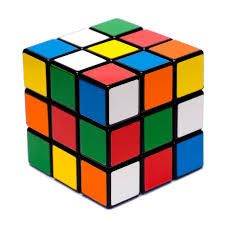Teaching Secondary Reading
A Resource for Improving Academic Literacy with Adolescents ©2015
Back to Main Vocab
Students are active in finding connections to and between words...
Learning through doing is a powerful way to learn new vocabulary. For example, learning to cook a turkey from an experienced cook may provide a rich vocabulary learning experience-- giblets, brine, truss, spatchcock, baster, etc.-- that happens almost without noticing. It is this sort of rich, real-life experience that we hope to replicate by using active discovery methods of vocabulary development.
Having an actual shared experience in the classroom is one way to get there. When you have a class lab, or show a film, or even provide a lecture, the hope is that as students engage in and understand the experience, they will acquire the vocabulary.
To enhance that acquisition, teachers must lead discussions about the experience. Astin notes that the strongest indicators of classroom success are the quality and quantity of student-teacher and student-student interaction. But young people don’t automatically know how to engage in discussions. They need instruction and practice in how to participate in group discussions.
A strategy to practice discussion is the Discussion Cube. Use the prepared questions, or use this blank Cube Pattern. On each side write a different direction, such as:

• "Define the Problem"
• "Explain the Problem in Your Own Words"
• "Give an Example or Illustration of the Problem"
• "Give a Possible Solution to the Problem"
• "Analyze Possible Solutions to the Problem for Strengths and Weaknesses"
• "Evaluate Possible Solutions to the Problem"
Change the prompts to suit your needs. Depending on how your class works, the teacher can roll it, the cube can be tossed student to student, or each small group can use their own discussion cube.
Graphic Organizers are a great way to organize and discover the connections between words and ideas. The matrix method as shown below helps make relationships visible. Columns are instances, and rows are characteristics.

See this link for even more examples of graphic organizers.
Semantic Feature Analysis uses a grid to help explore how a set of things are related to one another. By analyzing the grid one can see connections, make predictions and master important concepts.
For example, one could sort animals by their characteristics:

Here is a math sample and here is a science sample.
Word Sort is a flexible method that can be altered to meet your needs. Write key vocabulary and/or word parts on index cards, then ask students to notice and organize vocabulary based on linguistic features such as root, prefix, and affix, or parts of speech. Click below for an explanation and here for more tips on using this method with English Learners.
The views and opinions expressed on unofficial pages of California State University, Dominguez Hills faculty, staff or students are strictly those of the page authors.
The content of these pages has not been reviewed or approved by California State University, Dominguez Hills.
